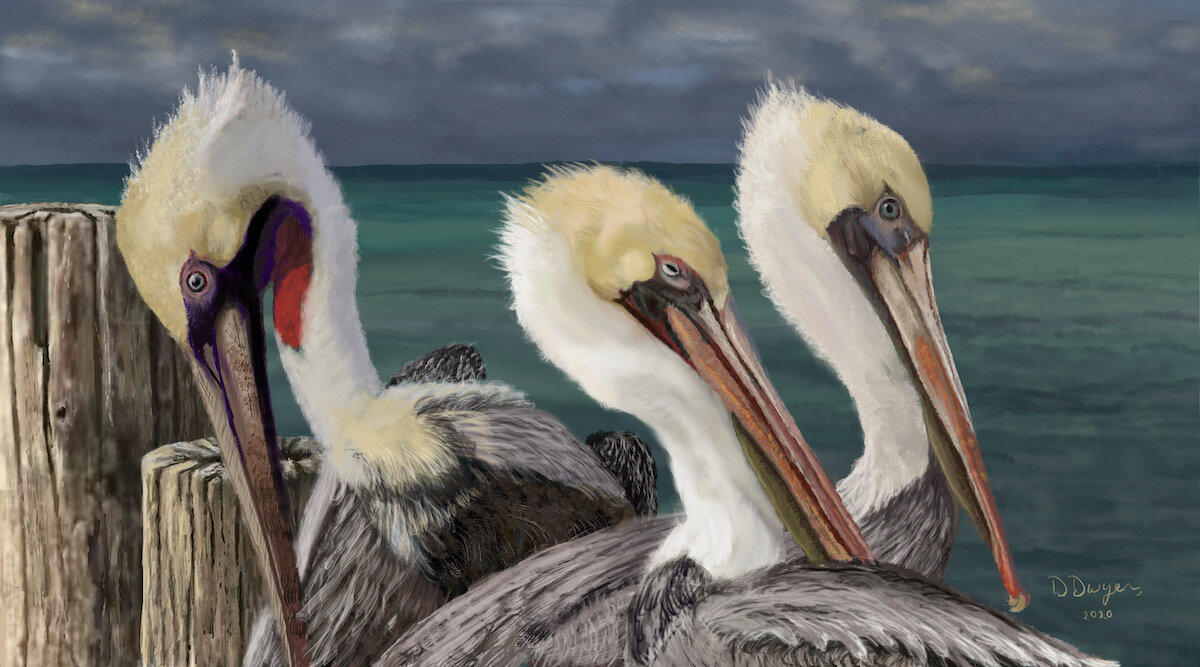(Final, 7/10/2020, 10x18, 300 dpi, 48,593 strokes)
Perfection Maligned
(Brown Pelicans)
I guess we all grew up seeing the goofy, cartooned version of the Brown Pelican. In the old Looney Tunes episodes, I remember the birds were often portrayed as streetcar or train conductors; I have no thoughts about why. But “goofy” was the common denominator in all the stories.
In fact, these birds are beautiful and capable of aerobatic maneuvers and dives that enable them to feed on schools of unwary small fish or occasionally on surprisingly large saltwater marauders. At the last moment of their plummet before piercing the water’s surface, they open their beaks and their hidden throat pouches stretch to encompass up to 3 gallons of inrushing water and fish. Bobbing back to the surface, they strain the water from their pouch, lift their heads, and swallow their haul. It’s that efficiency, I think, that enables their long, languid afternoon naps on piers and buoys all up and down the coast.
In our first year living in California, we watched sunsets from cliffs and beaches glowing in the last pearly reflections of the day. We could almost always count on seeing long lines of pelicans glide by, especially in the fall. Experienced adults would lead the parades, riding mere inches above the waves, with their long wings extended to capture the slightest updrafts—appearing motionless as they crossed the water. And always at the end of the parade would come the just-passed summer’s juveniles who had yet to learn the energy conserving lessons the adults had mastered. By comparison, they were comical, wings flapping, awkwardly rising and falling over the water, desperate to keep from being left behind.
An undulating line of silhouettes,
fading on silent wings,
disappears into the darkening night.
